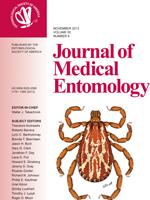The spatial heterogeneity of West Nile virus (WNV) activity in Sutter County, CA, as measured by mosquito infection rates, was associated with spatial variation in the prevalence of Culex blood feeding on competent passeriform hosts. Overall, 42 vertebrate host species (31 avian, 11 mammal) were identified from 601 blood-fed Culex tarsalis Coquillett and 151 blood-fed Culex pipiens L. complex females using sequences of the cytochrome c oxidase I gene and the Barcode of Life Data Systems database. WNV infection rates were low at sites where the primary vector, Cx. tarsalis, fed frequently on domestic cattle or incompetent galliform birds and high when females fed frequently on American Robins, American Crows, and Yellow-billed Magpies. Opportunistic host selection by Cx. tarsalis in combination with spatial variation in the presence of highly competent corvid hosts appeared to determine the distribution of WNV activity in rural Sutter County, CA.
How to translate text using browser tools
1 December 2013
Host-Selection Patterns of Culex tarsalis (Diptera: Culicidae) Determine the Spatial Heterogeneity of West Nile Virus Enzootic Activity in Northern California
Rebecca Campbell,
Tara C. Thiemann,
Debra Lemenager,
William K. Reisen
ACCESS THE FULL ARTICLE
It is not available for individual sale.
This article is only available to subscribers.
It is not available for individual sale.
It is not available for individual sale.

Journal of Medical Entomology
Vol. 50 • No. 6
November 2013
Vol. 50 • No. 6
November 2013
blood-feeding pattern
Culex pipiens
Culex tarsalis
transmission
West Nile virus




